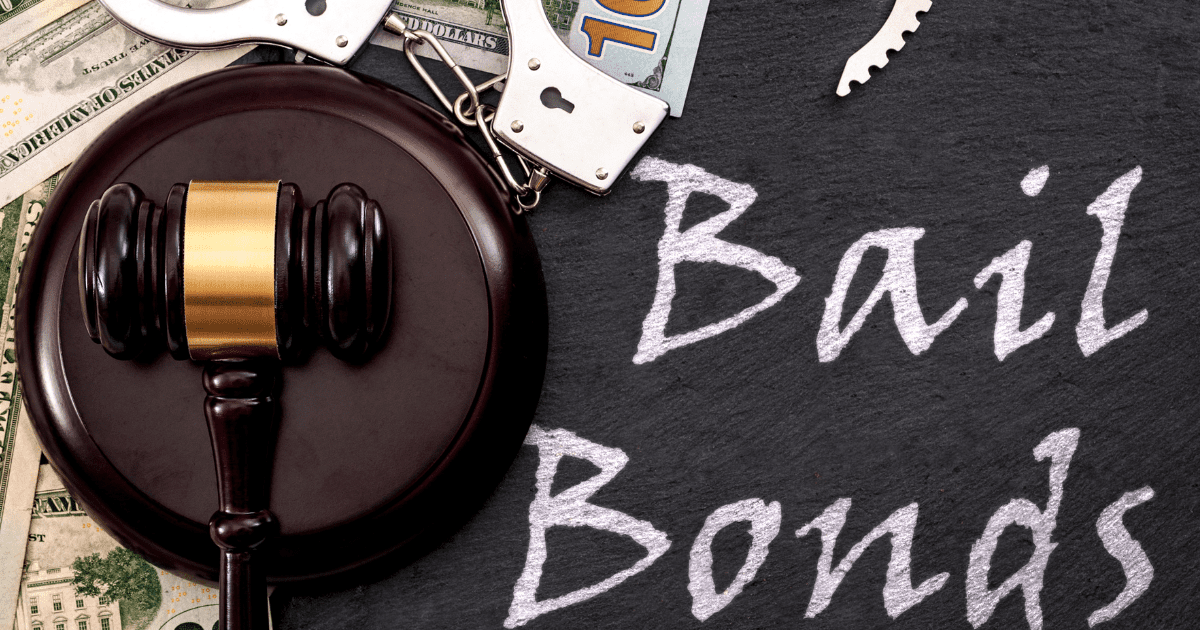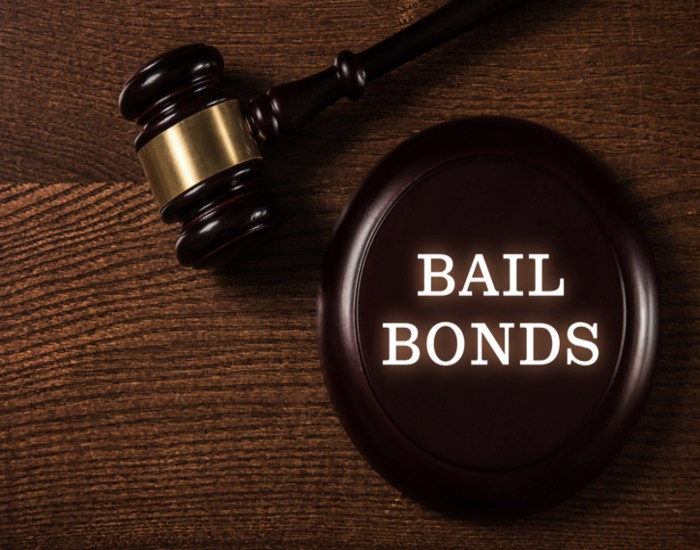A Comprehensive Check Out the Bail Bonds Process in Los Angeles
A Comprehensive Check Out the Bail Bonds Process in Los Angeles
Blog Article
How Bail Bonds Job: A Thorough Summary
Bail bonds play a critical role in the lawful procedure by providing a mechanism for individuals to secure their launch from custodianship while awaiting trial. Comprehending the details of how bail bonds work, including the functions of courts, bail bondsmensman, and the various charges involved, can be important for anybody navigating this complex system. As we explore the various kinds of bail bonds and the elements that influence their prices, it comes to be obvious that the obligations tied to these agreements expand far past simple financial transactions. What effects do these obligations hold for defendants and their family members?
What Are Bail Bonds?
Bail bonds are typically made use of in the criminal justice system as a financial assurance that a charged person will certainly appear in court as required. When a person is arrested, a judge might establish a bail amount based on numerous factors, including the extent of the offense, the accused's criminal background, and the danger of trip. They might look for the aid of a bond bondsman. if the accused can not pay for the bail amount - Los Angeles Bail Bondsman.
A bail bond is a contract in between the accused, the bail bondsman, and the court, guaranteeing that the accused will fulfill their lawful commitments. In exchange for a fee, normally a percent of the overall bail quantity, the bondsman gives the court with a surety that ensures the bail. If the implicated fails to show up in court, the bondsman is in charge of paying the full bail total up to the court, which might lead them to pursue the offender for recovery.
Bail bonds offer to promote the launch of individuals awaiting test, enabling them to maintain their work and family members obligations while guaranteeing conformity with court appearances. This system is indispensable to balancing the legal rights of the charged with the interests of public safety and security and judicial stability.
The Bail Process Discussed
After comprehending the duty of bail bonds in the criminal justice system, it is essential to lay out the bail process itself. The bail process starts when a person is arrested and taken right into custody. Complying with the arrest, the defendant is usually brought prior to a judge for a preliminary hearing, where the judge will figure out whether to provide bail and established the amount.
If bail is granted, the accused has a number of choices to protect their release. They might pay the full bail quantity in money, which is returned upon the completion of their court obligations. The accused can seek the aid of a bond bondsman, who bills a non-refundable charge-- usually a percent of the total bail quantity-- to upload bail on their part.
Once bail is posted, the offender is launched from safekeeping with the understanding that they have to go to all scheduled court looks. Failing to appear can cause the forfeiture of the bail and added legal consequences. The process concludes when the case is resolved, at which direct the bail is either returned or retained by the bail bondsman as repayment for their solutions.

Sorts Of Bail Bonds
Various options exist when it involves protecting a release from custodianship with bail bonds. Understanding the various types can help accuseds and their families make informed options.
One of the most usual type is the guaranty bond, which includes a third-party bail bondsmansman who guarantees the complete bail total up to the court in exchange for a non-refundable cost, usually around 10% of the bail amount. This choice is widely used as a result of its availability for people that might not have the monetary ways to pay the full bail upfront.
An additional kind is the cash bond, see this here where the offender or a co-signer pays the complete bail amount in money directly to the court. Upon effective conclusion of the situation, the funds are refunded, minus any kind of suitable costs.

Lastly, migration bonds are especially designed for people apprehended by migration authorities, facilitating their launch while they await legal procedures. Each kind of bail bond serves unique functions, accommodating numerous scenarios and requires within the legal system.
Aspects Affecting Bail Expenses
Numerous essential factors influence the general cost of bail, establishing how much a defendant or their household may require to spend for release. Among the key elements is the intensity of the charges. Felony fees typically lead to greater bail quantities compared to offenses due to the perceived danger of flight and the prospective consequences of the crime.

The defendant's financial circumstance can additionally impact the bail amount. Courts may you can try here take into consideration an offender's revenue and possessions when identifying bail, possibly bring about higher prices for those with higher funds. The schedule of security might affect the required payment. If a bondsman regards a greater threat, they may establish a higher premium, more boosting the costs associated with securing a bail bond. Comprehending these aspects can aid defendants and their households prepare for the monetary ramifications of securing bail.
Responsibilities of the Indemnitor
Once bail has been secured, the responsibilities of the indemnitor, or the individual that consents to back the bail bond, entered into play. The indemnitor is mainly in charge of ensuring that the defendant goes to all arranged court appearances. Failure to do so might lead to the loss of the bail bond and prospective legal consequences for the indemnitor.
Furthermore, the indemnitor is bound to repay the bail bond firm the sum total of the bond if the offender stops working to appear in court. This consists of any type of prices or fees incurred by the bail representative in recovering the defendant, which might further intensify the economic concern on the indemnitor.
The indemnitor has to likewise maintain check my source open interaction with both the defendant and the bail bail bondsman, giving any necessary updates associated to the offender's circumstance. It is necessary for the indemnitor to continue to be knowledgeable about the legal obligations and repercussions associated with the bail bond, as lack of knowledge may cause unplanned responsibilities.
Conclusion
In summary, bail bonds work as a vital mechanism within the criminal justice system, assisting in the launch of defendants while guaranteeing their look in court. Recognizing the various kinds of bail bonds, the ins and outs of the bail process, and the aspects influencing bail costs is important for navigating this complex landscape. Furthermore, understanding of the responsibilities borne by the indemnitor highlights the significance of educated decision-making when engaging with bail bond services.
Comprehending the intricacies of exactly how bail bonds work, consisting of the functions of courts, bail bondsmen, and the different fees included, can be vital for any person navigating this complex system.After recognizing the role of bail bonds in the criminal justice system, it is vital to outline the bail process itself. The offender can look for the help of a bail bondsman, that charges a non-refundable charge-- generally a percent of the overall bail quantity-- to upload bail on their behalf.
If a bond bondsman views a higher risk, they may set a greater premium, more increasing the prices connected with securing a bail bond. Comprehending the different types of bail bonds, the intricacies of the bail process, and the aspects influencing bail prices is necessary for navigating this complicated landscape.
Report this page